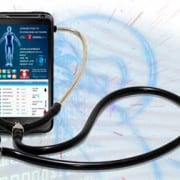New Healthcare Tech and the Future of IoMT
When technology changes, so does it’s footprint wherever it goes. This means technological innovations across industries such as manufacturing, education, and of course healthcare. Healthcare technology has made itself a standard in the medical industry, and it’s just getting started. Like the well-known Internet of Things (IoT), the Internet of Medical Things (IoMT) refers to a broad constellation of health-related devices that are connected to the internet and rapidly send and receive critical information. IoMT technologies are specifically designed to optimize patient care by making the industry more efficient and effective. New healthcare tech is constantly being introduced in the field and is effectively changing the way we treat patients. Some newer tech include:
The Potential of 3D Printing
Thanks to emerging innovations in the arena of medical 3D printing, Lee points out, patients needing a brand-new synthetic replacement of lost limbs can have one made via 3D printing – exactly replicating their physiognomy. In the dental field, 3D printing technology is being utilized to create crowns and dentures for patients. As medical 3D printing technologies continue to evolve, it is IoMT can play an instrumental role by connecting medical 3D printers to secure internet networks to access and remotely transmit patients’ medical records to print custom prosthetics — all without requiring the transport of physical patient records, an expensive, time-consuming, and often risky practice.
Enhancing Surgical Care
Another emerging tech that Lee discusses is the enhancement of surgical care. She states that the advent of laser surgery guided by 3D imaging is transforming cataract surgery, making these procedures more precise, more efficient, and more efficacious than traditional processes. Through the use of the IoMT, ophthalmic surgeons can use 3D images of the patient’s eye to guide the surgical laser with greater accuracy based on the individual’s eye anatomy.
Telehealth and the IoMT
Lastly, with telehealth becoming a new norm thanks to the covid-19 pandemic in 2020, the IoMT holds tremendous promise for relieving an already overburdened healthcare system while at the same time improving patient outcomes and experiences. Lee states that not only can IoMT devices enable patients to connect with healthcare providers with the mere touch of a button on their smartphone or laptop, but they can also allow medically fragile persons to remain in their homes and retain their independence for far longer. The information collected through IoMT devices enhances patient diagnosis and treatment planning, but it also has incredible analytical capacities of the artificial intelligence (AI) technologies that are often integrated into IoMT telehealth devices.
Healthcare and technology these days basically go hand in hand. Technology’s role has never been more important than it is in today’s lifestyle. Not only is the advent of the IoMT promoting more convenience for patients, Lee concludes, but it’s adding a level of optimization that increases success rates with patients — something providers only hoped for in the past.



